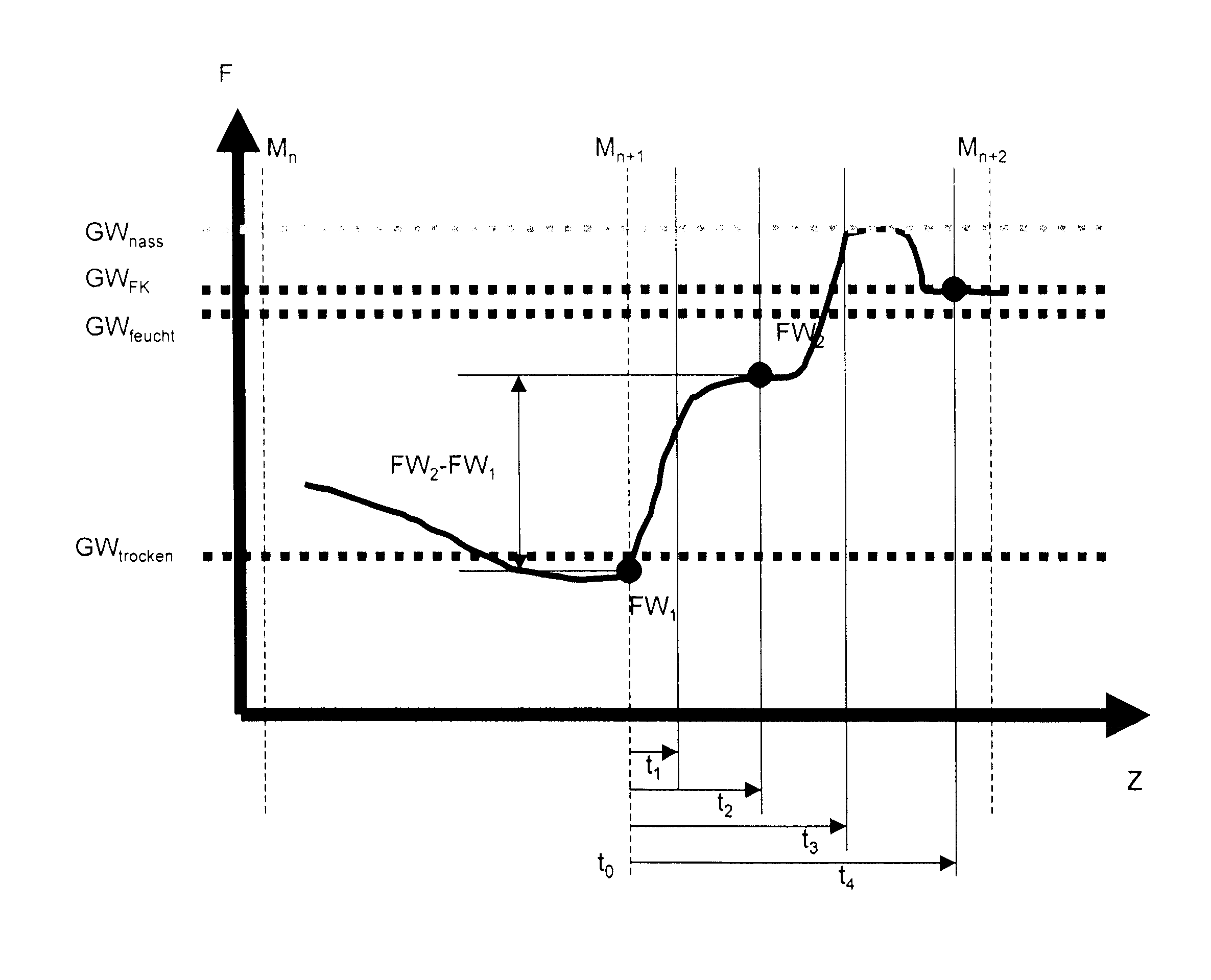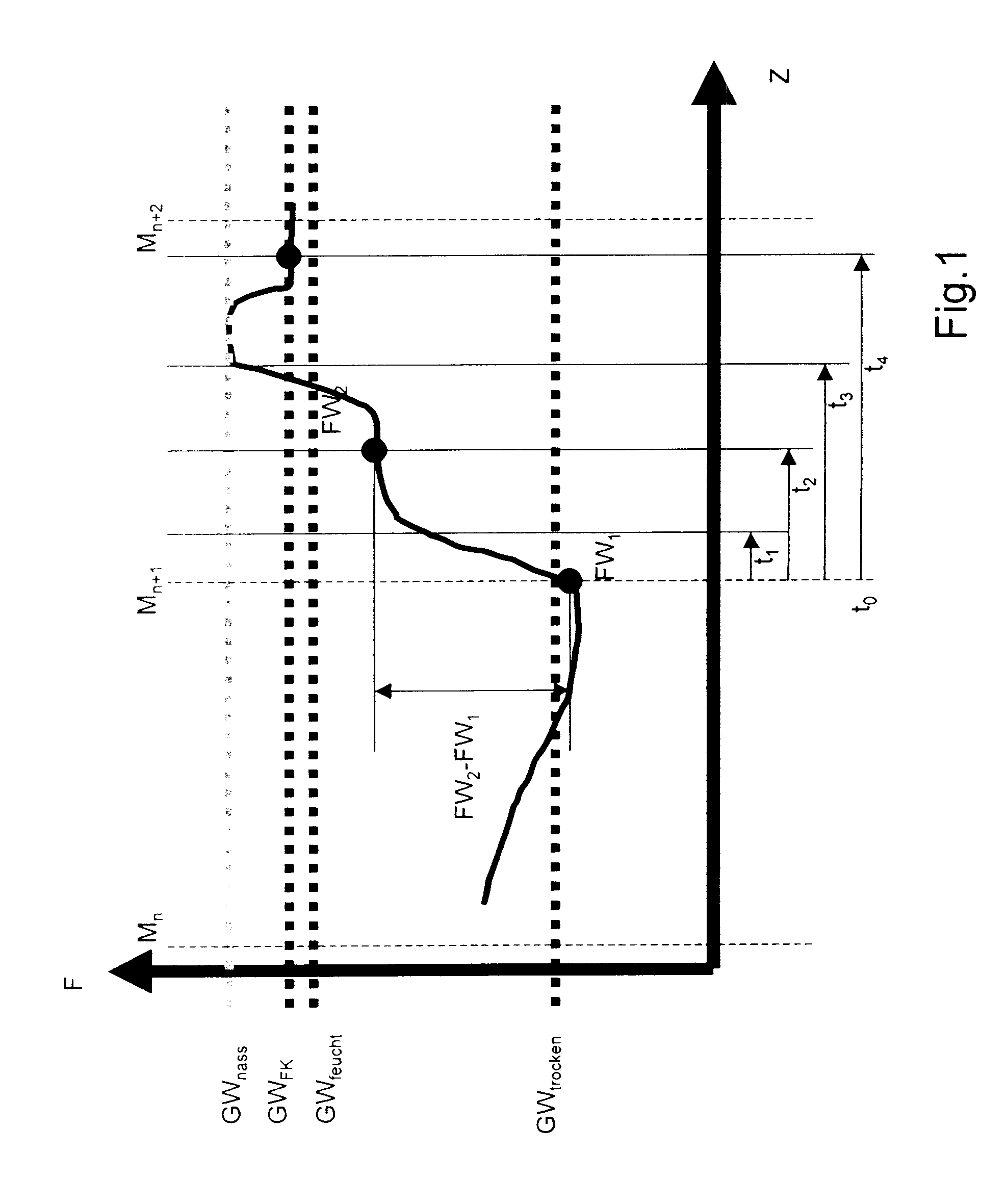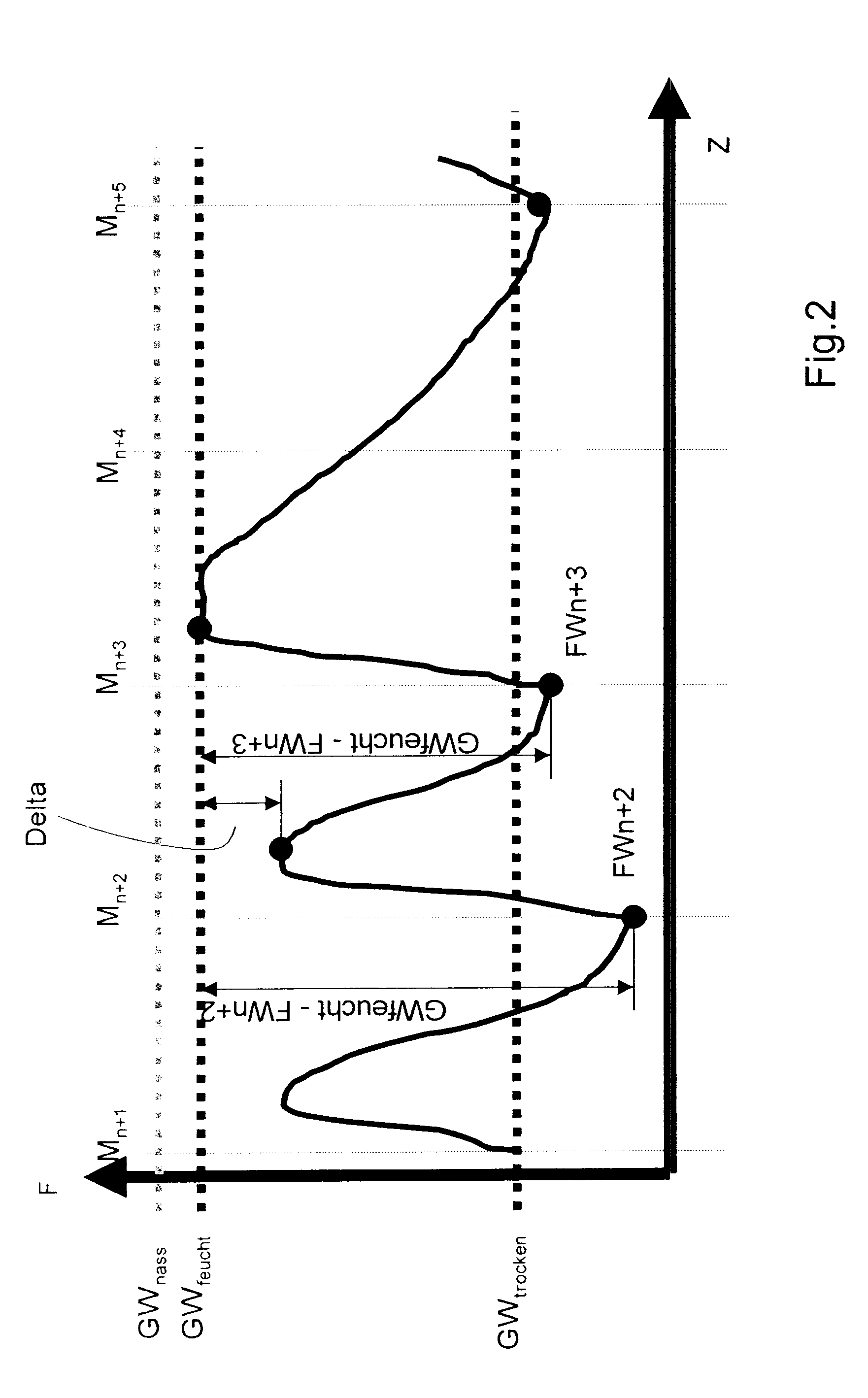Method and apparatus for the automatic regulation of the irrigation of plants
a technology of automatic regulation and irrigation, applied in the direction of automatic control, process and machine control, instruments, etc., can solve the problems of low flexibility of irrigation control, inability to establish itself on the market, and high cost of purchasing and maintaining soil moisture sensors, etc., to achieve accurate monitoring and reduce or decrease the moisture limit value
- Summary
- Abstract
- Description
- Claims
- Application Information
AI Technical Summary
Benefits of technology
Problems solved by technology
Method used
Image
Examples
Embodiment Construction
[0028]The graph in FIG. 1 shows the profile of the moisture level F against time Z. The soil moisture content is measured at regular intervals Mn, Mn+1, Mn+2 . . . . At the instant Mn, the soil moisture content is still above a set limit value GWdry that corresponds to a minimum soil moisture that is to be reached. At the instant of the following measurement Mn+1 at the instant t0, the soil moisture content, the first moisture value FW1, is below the set limit value GWdry. An irrigation operation is correspondingly initiated and terminated at the instant t1. The instant t1 or the irrigation time t1-t0 is preferably selected to be very short, for example 5 min., for a calibration measurement, in order to reliably prevent over-irrigation. At a second instant t2, a control measurement, for example approximately ½ hour after the irrigation, is carried out, and a further moisture value FW2 is measured. Thereafter, the system determines a characteristic K from the measured values in accor...
PUM
 Login to View More
Login to View More Abstract
Description
Claims
Application Information
 Login to View More
Login to View More - R&D
- Intellectual Property
- Life Sciences
- Materials
- Tech Scout
- Unparalleled Data Quality
- Higher Quality Content
- 60% Fewer Hallucinations
Browse by: Latest US Patents, China's latest patents, Technical Efficacy Thesaurus, Application Domain, Technology Topic, Popular Technical Reports.
© 2025 PatSnap. All rights reserved.Legal|Privacy policy|Modern Slavery Act Transparency Statement|Sitemap|About US| Contact US: help@patsnap.com



